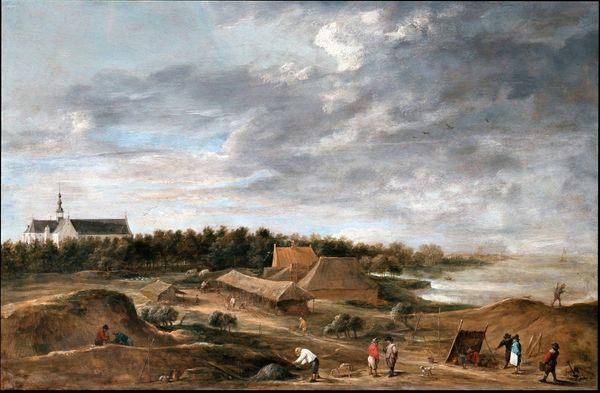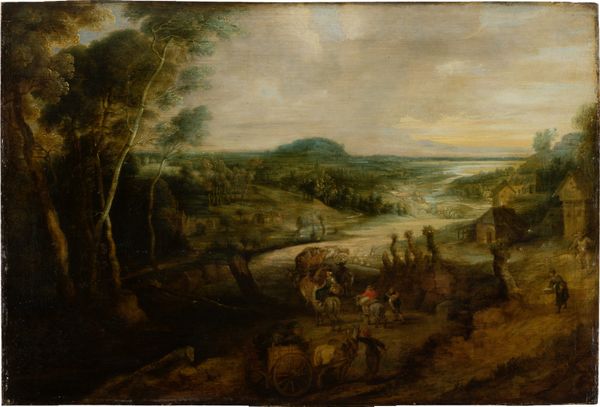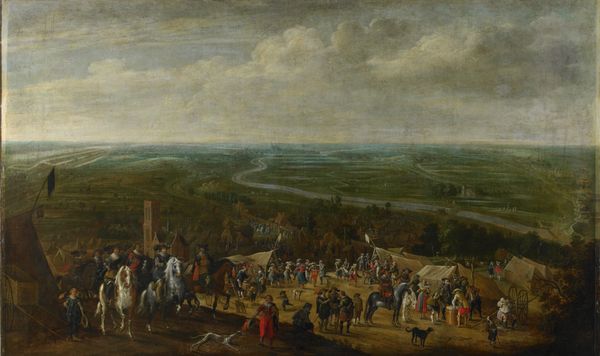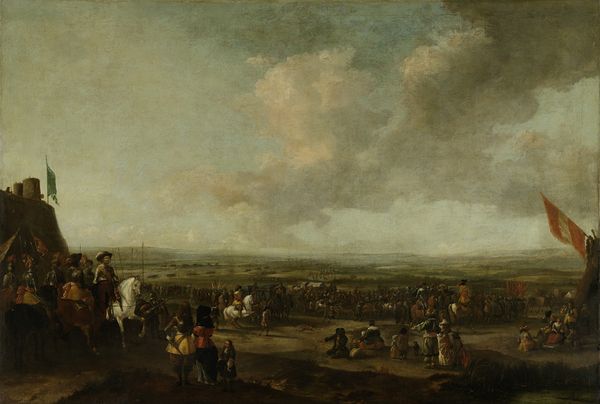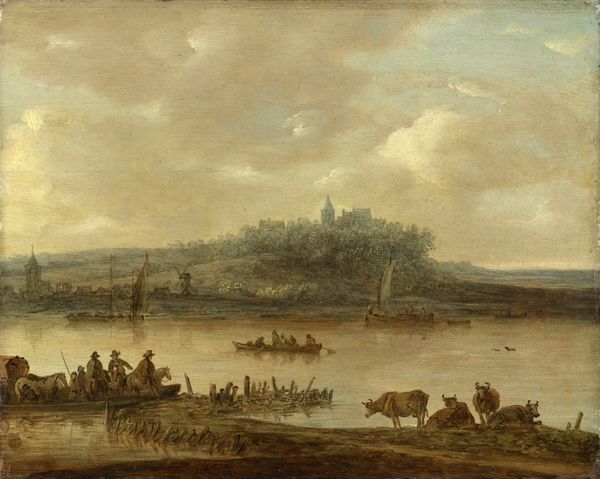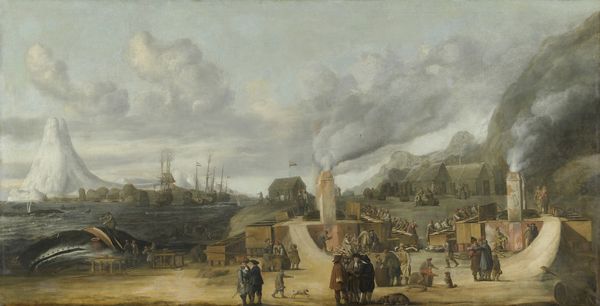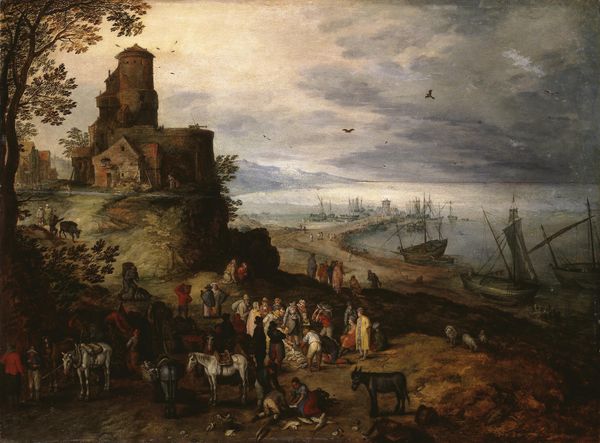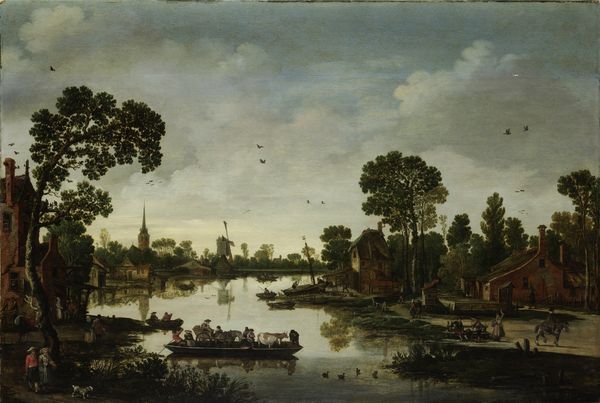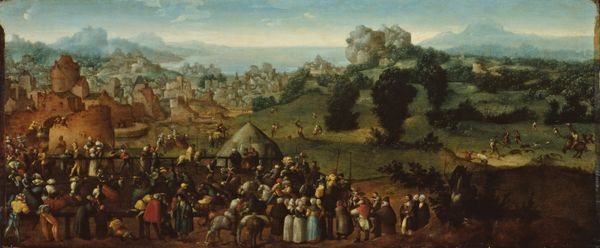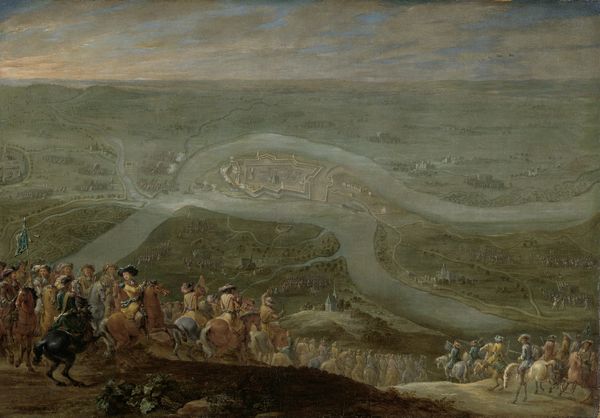
painting, oil-paint
#
baroque
#
dutch-golden-age
#
painting
#
oil-paint
#
landscape
#
oil painting
#
genre-painting
#
realism
Dimensions: height 112 cm, width 190 cm, depth 4.5 cm
Copyright: Rijks Museum: Open Domain
Pieter de Molijn’s oil on panel, "Wool Making", presents a panoramic scene dominated by a warm, earthy palette. The composition is structured into distinct horizontal layers: the foreground with water activities, the middle ground displaying wool production, and a distant background with architectural forms. The painting is formally intriguing through its handling of space and depth. The activities in the foreground suggest a bustling energy, contrasting with the more static depiction of the village and the subdued tones of the landscape. The materiality of wool, evident in its various stages of production, offers a tactile quality that enlivens the scene. The painting destabilizes traditional notions of landscape by embedding industrial activity within the pastoral. It reflects broader 17th-century Dutch concerns with commerce, labor, and the transformation of the natural world. The meticulous depiction of wool production is not merely representational; it engages with early capitalist values by framing labor as spectacle. In conclusion, the painting's formal qualities and the contrast of earthy colors invite us to consider the intersection of art and industry. This is a view that challenges the romantic idyll of rural life while subtly commenting on labor, a cultural dialogue that continues today.
Comments
No comments
Be the first to comment and join the conversation on the ultimate creative platform.

